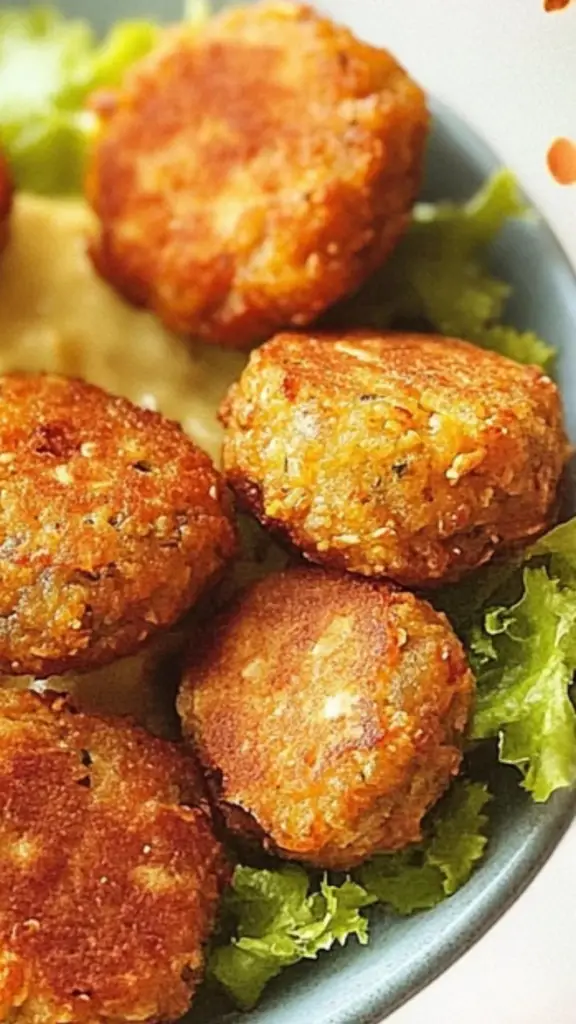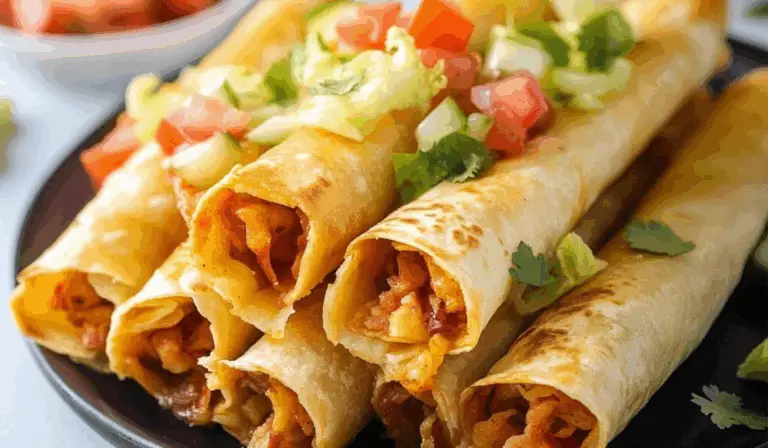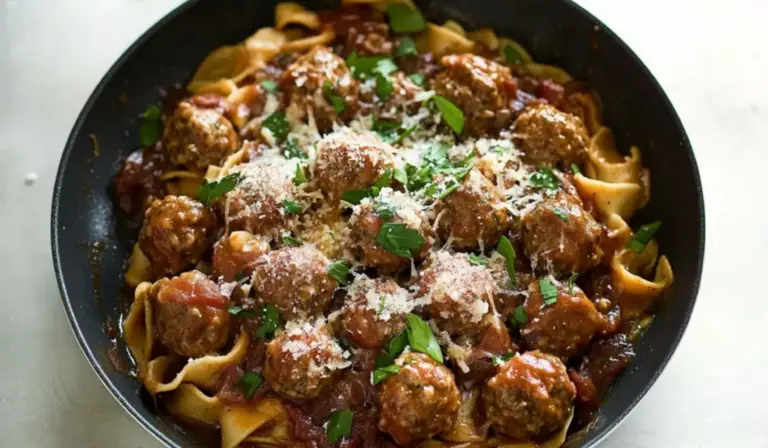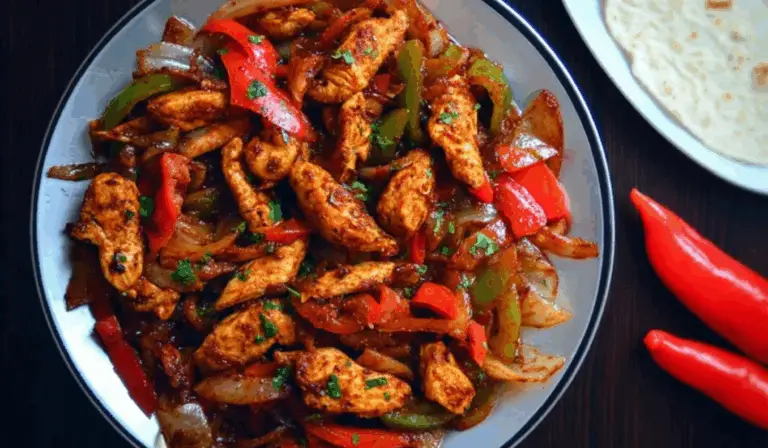The Beginner’s Guide to Making Perfect Falafel
Falafel has long been a beloved staple in Middle Eastern cuisine, and its journey from the bustling streets of Israel to kitchens around the globe is a testament to its irresistible flavor and versatility. I vividly remember the first time I encountered falafel during a trip to Tel Aviv. Wandering through a lively market, I was drawn in by the sizzling sounds and mouthwatering aroma of freshly fried chickpea balls. I eagerly sampled one, its crunchy exterior giving way to a warm, flavorful center that instantly captured my heart. Since that day, I have been passionate about sharing this delightful recipe with fellow beginner cooks, hoping to bring a piece of that vibrant street food culture into homes everywhere.
PrintThe Beginner’s Guide to Making Perfect Falafel
Dreaming of perfectly crispy falafel? This beginner’s guide has you covered! With just a few simple ingredients, you’ll create the most flavorful, crunchy, and tender falafel right in your own kitchen. No deep-fryer needed—just a foolproof recipe that delivers authentic taste every time. Serve them with tahini, tuck them into a pita, or enjoy them solo—either way, it’s a bite of Middle Eastern magic! 🌱🔥🥙
#PerfectFalafel 🥙 #CrispyCravings 🤤 #FalafelMadeEasy 👩🍳 #MiddleEasternEats 🌍 #FlavorExplosion 💥 #HealthyAndDelicious 🌱 #HomemadeGoodness 🍽️ #PlantBasedPerfection 🥒 #GoldenAndCrispy ✨ #VeganComfortFood ❤️
- Prep Time: 20 minutes
- Cook Time: 10 minutes
- Total Time: 30 minutes
- Yield: 4 servings
Ingredients
- Dried Chickpeas: 1 cup (if using dried chickpeas, remember to soak them overnight in plenty of water for at least 12 hours; alternative: 1 ½ cups of canned chickpeas, drained and rinsed, though using canned chickpeas may result in a slightly different texture)
- Onion: ½ medium, roughly chopped
- Garlic: 3 cloves, peeled
- Fresh Parsley: 1 cup, loosely packed (for a twist, try using a mix of parsley and cilantro)
- Ground Cumin: 1 teaspoon (adds warmth and depth to the flavor)
- Ground Coriander: 1 teaspoon (enhances the herbal notes)
- Baking Soda: ½ teaspoon (this is optional but helps to lighten the texture, especially when using soaked chickpeas)
- Flour: 2-3 tablespoons (use chickpea flour for an extra boost of flavor or all-purpose flour; alternative: substitute with gluten-free flour for a gluten-free option)
- Salt and Pepper: To taste
- Oil: For frying (choose a neutral oil such as vegetable or canola oil; if you prefer, light olive oil is also a great choice)
Instructions
1. Blend the Base
- Combine Ingredients:Place your soaked (or canned) chickpeas, chopped onion, garlic, and parsley into a food processor. Add in the ground cumin, coriander, salt, and pepper.
- Process:Pulse the mixture until it reaches a coarse consistency. The goal is to chop everything finely, but not so much that the mixture becomes a paste. Maintaining some texture is key to achieving that signature crispy bite once fried.
Additional Note:
If you prefer a slightly smoother texture while still keeping some chunkiness, pulse a few extra times until you reach your desired consistency. Experiment with the blending process—remember, practice makes perfect!
2. Mix and Bind
- Transfer and Stir:Once your mixture is well blended, transfer it to a large mixing bowl.
- Add Binding Agents:Stir in the baking soda and gradually add the flour. Start with 2 tablespoons and mix well. The flour helps the mixture bind together so that it holds its shape during frying. If the mixture seems too loose or sticky, add an extra tablespoon of flour.
- Rest the Mixture:Allow the falafel mixture to rest for about 15-20 minutes. This resting period not only helps the flavors meld together but also gives the flour time to absorb any excess moisture, making the mixture easier to shape.
3. Shape the Falafel
- Forming the Balls:With clean hands lightly dusted with flour, form the mixture into small balls or patties, approximately the size of a walnut. If you’re aiming for a more traditional look, you can shape them into slightly flattened discs.
- Handling the Mixture:If the mixture feels too soft or starts to crumble, adding a touch more flour can help it hold together better. Conversely, if the mixture is too dense, a tiny splash of water can help loosen it up slightly.
4. Fry to Perfection
- Heat the Oil:Pour about 1-2 inches of oil into a deep pan or a deep-fryer, and heat it to 350°F (175°C). A thermometer is very handy for ensuring the oil is at the right temperature—too hot and the falafel will burn on the outside before cooking through; too cool and they’ll absorb more oil than necessary.
- Frying Process:Gently place a few falafel balls into the hot oil. Be careful not to overcrowd the pan, as this can lower the oil’s temperature and result in soggy falafel.
- Cooking Time:Fry the falafel for 3-4 minutes on each side until they develop a beautiful, golden-brown crust. For those new to frying, it can be helpful to use a slotted spoon to gently turn the falafel during cooking.
- Check for Doneness:To ensure your falafel are cooked through, cut one open after frying. The interior should be moist and tender, yet firm enough to hold its shape. If you notice any raw spots, let the falafel cook for a minute or two longer.
- Drain and Rest:Once cooked, remove the falafel with a slotted spoon and transfer them to a plate lined with paper towels to drain any excess oil.
Notes
- Binding Issues:
If your falafel mixture falls apart when shaping, it may be too wet. Try adding a bit more flour, one tablespoon at a time, until the mixture is easier to handle. On the other hand, if your mixture is too dry, a small drizzle of water or lemon juice can help bring it together. - Oil Temperature Tips:
Maintaining the correct oil temperature is crucial. A quick tip is to drop a tiny piece of the falafel mixture into the oil—if it sizzles immediately, the oil is ready. Using a deep-fry thermometer can also help you monitor the temperature more accurately. - Flavor Enhancements:
While this recipe sticks to classic spices, feel free to experiment. For instance, a pinch of smoked paprika or a dash of chili powder can provide a subtle heat and an extra layer of flavor. Alternatively, add a small handful of fresh mint or dill to your parsley mixture for a unique twist. - Efficient Kitchen Prep:
To make your cooking process smoother, prepare all your ingredients before you begin. Not only does this minimize stress, but it also gives you a chance to ensure everything is measured out and ready. This approach, known as mise en place, is a favorite among professional chefs and can greatly benefit beginners.
This falafel recipe is designed with simplicity, time efficiency, and health in mind. It requires minimal ingredients and basic kitchen tools, making it an ideal project for anyone just starting their culinary journey. Not only is falafel plant-based and rich in protein and fiber, but it’s also incredibly versatile—perfect as a snack, a filling for pita, or even a hearty salad topping. Let’s dive into this step-by-step guide that promises to make your cooking experience as enjoyable as it is rewarding.
Ingredients and Preparation
Ingredients
To create the perfect falafel, you’ll need the following ingredients:
- Dried Chickpeas: 1 cup (if using dried chickpeas, remember to soak them overnight in plenty of water for at least 12 hours; alternative: 1 ½ cups of canned chickpeas, drained and rinsed, though using canned chickpeas may result in a slightly different texture)
- Onion: ½ medium, roughly chopped
- Garlic: 3 cloves, peeled
- Fresh Parsley: 1 cup, loosely packed (for a twist, try using a mix of parsley and cilantro)
- Ground Cumin: 1 teaspoon (adds warmth and depth to the flavor)
- Ground Coriander: 1 teaspoon (enhances the herbal notes)
- Baking Soda: ½ teaspoon (this is optional but helps to lighten the texture, especially when using soaked chickpeas)
- Flour: 2-3 tablespoons (use chickpea flour for an extra boost of flavor or all-purpose flour; alternative: substitute with gluten-free flour for a gluten-free option)
- Salt and Pepper: To taste
- Oil: For frying (choose a neutral oil such as vegetable or canola oil; if you prefer, light olive oil is also a great choice)
Preparation
- Soak the Chickpeas:
- If you’re using dried chickpeas, place them in a large bowl and cover with water. Allow them to soak overnight (a minimum of 12 hours is ideal). This step is crucial as it softens the chickpeas and makes them easier to blend. After soaking, drain the chickpeas thoroughly.
- Prep Your Ingredients:
- Roughly chop the onion, garlic, and parsley. This step not only speeds up the blending process but also helps to preserve a delightful, slightly chunky texture in your falafel. Having your ingredients prepped beforehand (a technique known as mise en place) will ensure that you remain organized and relaxed during the cooking process.
Step-by-Step Instructions
1. Blend the Base
- Combine Ingredients:
Place your soaked (or canned) chickpeas, chopped onion, garlic, and parsley into a food processor. Add in the ground cumin, coriander, salt, and pepper. - Process:
Pulse the mixture until it reaches a coarse consistency. The goal is to chop everything finely, but not so much that the mixture becomes a paste. Maintaining some texture is key to achieving that signature crispy bite once fried.
Additional Note:
If you prefer a slightly smoother texture while still keeping some chunkiness, pulse a few extra times until you reach your desired consistency. Experiment with the blending process—remember, practice makes perfect!
2. Mix and Bind
- Transfer and Stir:
Once your mixture is well blended, transfer it to a large mixing bowl. - Add Binding Agents:
Stir in the baking soda and gradually add the flour. Start with 2 tablespoons and mix well. The flour helps the mixture bind together so that it holds its shape during frying. If the mixture seems too loose or sticky, add an extra tablespoon of flour. - Rest the Mixture:
Allow the falafel mixture to rest for about 15-20 minutes. This resting period not only helps the flavors meld together but also gives the flour time to absorb any excess moisture, making the mixture easier to shape.
3. Shape the Falafel
- Forming the Balls:
With clean hands lightly dusted with flour, form the mixture into small balls or patties, approximately the size of a walnut. If you’re aiming for a more traditional look, you can shape them into slightly flattened discs. - Handling the Mixture:
If the mixture feels too soft or starts to crumble, adding a touch more flour can help it hold together better. Conversely, if the mixture is too dense, a tiny splash of water can help loosen it up slightly.
4. Fry to Perfection
- Heat the Oil:
Pour about 1-2 inches of oil into a deep pan or a deep-fryer, and heat it to 350°F (175°C). A thermometer is very handy for ensuring the oil is at the right temperature—too hot and the falafel will burn on the outside before cooking through; too cool and they’ll absorb more oil than necessary. - Frying Process:
Gently place a few falafel balls into the hot oil. Be careful not to overcrowd the pan, as this can lower the oil’s temperature and result in soggy falafel. - Cooking Time:
Fry the falafel for 3-4 minutes on each side until they develop a beautiful, golden-brown crust. For those new to frying, it can be helpful to use a slotted spoon to gently turn the falafel during cooking. - Check for Doneness:
To ensure your falafel are cooked through, cut one open after frying. The interior should be moist and tender, yet firm enough to hold its shape. If you notice any raw spots, let the falafel cook for a minute or two longer. - Drain and Rest:
Once cooked, remove the falafel with a slotted spoon and transfer them to a plate lined with paper towels to drain any excess oil.
Beginner Tips and Notes
Troubleshooting and Adjustments
- Binding Issues:
If your falafel mixture falls apart when shaping, it may be too wet. Try adding a bit more flour, one tablespoon at a time, until the mixture is easier to handle. On the other hand, if your mixture is too dry, a small drizzle of water or lemon juice can help bring it together. - Oil Temperature Tips:
Maintaining the correct oil temperature is crucial. A quick tip is to drop a tiny piece of the falafel mixture into the oil—if it sizzles immediately, the oil is ready. Using a deep-fry thermometer can also help you monitor the temperature more accurately. - Flavor Enhancements:
While this recipe sticks to classic spices, feel free to experiment. For instance, a pinch of smoked paprika or a dash of chili powder can provide a subtle heat and an extra layer of flavor. Alternatively, add a small handful of fresh mint or dill to your parsley mixture for a unique twist. - Efficient Kitchen Prep:
To make your cooking process smoother, prepare all your ingredients before you begin. Not only does this minimize stress, but it also gives you a chance to ensure everything is measured out and ready. This approach, known as mise en place, is a favorite among professional chefs and can greatly benefit beginners.
Tools and Equipment
- Food Processor:
A food processor is key to achieving the perfect texture for your falafel. If you don’t have one, you can finely chop the ingredients by hand, though it may take a bit more time. - Deep Pan or Fryer:
Using a deep pan ensures that you have enough oil for frying. If you’re concerned about handling hot oil, consider using a deep-fryer with a built-in temperature control. - Slotted Spoon:
This handy tool helps safely remove the falafel from the hot oil while draining off excess oil.
Serving Suggestions
Falafel is incredibly versatile and can be enjoyed in various ways. Here are some ideas to elevate your dish:
Classic Pita Sandwich
- Pita Bread:
Serve your falafel stuffed in a warm, soft pita bread. The contrast between the crunchy exterior and the soft, airy bread is delightful. - Hummus and Tahini:
Spread a generous layer of hummus inside the pita before adding the falafel. Drizzle with tahini sauce for a rich, nutty flavor that complements the spices in the falafel perfectly. - Fresh Vegetables:
Top your falafel with a mix of sliced cucumbers, tomatoes, red onions, and fresh greens. A squeeze of lemon juice adds a refreshing tang.
Salad Bowl
- Base:
Create a hearty salad by placing falafel on a bed of mixed greens. - Toppings:
Add diced cucumbers, cherry tomatoes, red onions, and olives. A sprinkle of crumbled feta (if you’re not vegan) can bring an extra burst of flavor. - Dressing:
Drizzle a light lemon-olive oil dressing over the top, or opt for a yogurt-based sauce if you’d like a creamier texture.
Dipping Platters
- Assorted Dips:
Serve falafel as an appetizer alongside a variety of dips. In addition to classic tahini, try a spicy harissa dip or a cooling cucumber raita. - Crunchy Sides:
Offer a side of pickled vegetables or a fresh, tangy tabbouleh salad to round out the flavors on your platter.

Storage and Leftover Tips
- Refrigeration:
If you have leftovers, store your cooked falafel in an airtight container in the refrigerator for up to 3 days. - Re-crisping:
To enjoy them as if they were freshly made, reheat the falafel in a preheated 350°F (175°C) oven for about 10 minutes. This method helps restore their crispiness without the need for additional frying. - Freezing:
You can also freeze uncooked falafel patties. Lay them out on a baking sheet, freeze until solid, and then transfer to a freezer bag. When ready to cook, fry them directly from frozen—just add an extra minute or two to the frying time.
Conclusion
Embarking on your culinary journey with this falafel recipe is not just about cooking—it’s about experiencing a slice of cultural heritage and discovering the joy of creating something delicious from scratch. Falafel is perfect for beginner cooks because it combines simple techniques with bold flavors, offering an accessible entry point into plant-based cooking that’s both healthy and satisfying.
From the moment you soak the chickpeas to the final, crispy bite, every step of this recipe is designed to build your confidence in the kitchen. The process of blending, mixing, shaping, and frying may seem a bit daunting at first, but with a little practice and these detailed instructions, you’ll soon master the art of making perfect falafel. Remember, every great cook started somewhere, and every attempt is a step toward culinary expertise.
I encourage you to experiment with this recipe—try different herbs, adjust the spices, and make it your own. Share your experiences, tweaks, and even any challenges you faced in the comments below. Your feedback not only helps create a community of supportive cooks but also inspires others to take the plunge into trying new recipes.
So, roll up your sleeves, gather your ingredients, and let the aromatic journey of falafel transform your kitchen into a mini Middle Eastern street market. Happy cooking, and enjoy every crunchy, flavorful bite of your homemade falafel adventure!








